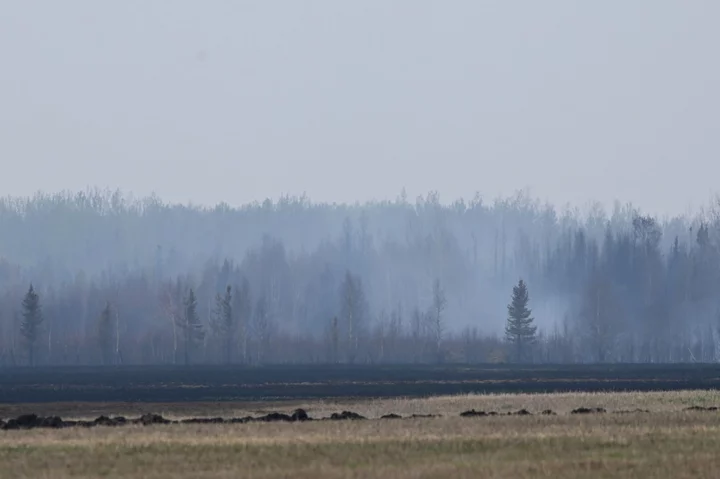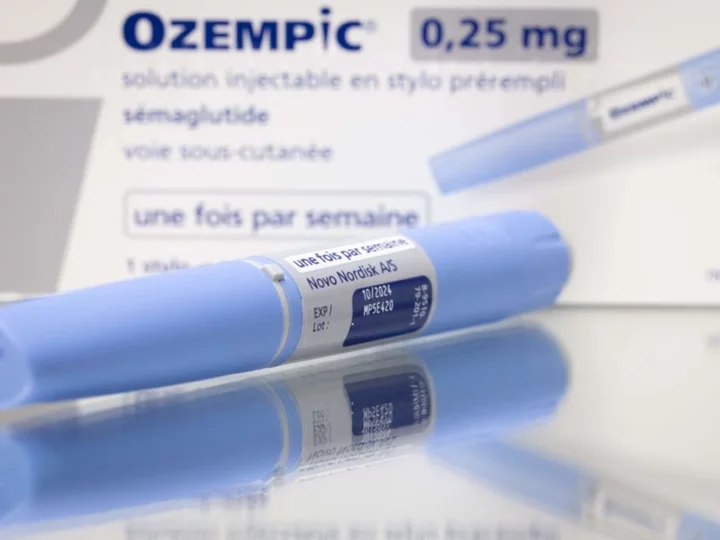The number of fires burning in Canada’s top energy-producing province of Alberta declined overnight, bringing some relief to drillers and residents.
Alberta reported 76 active wildfires as of 10:24 a.m. Calgary time on Wednesday, with 24 of those listed as out of control. That’s down from more than 100 fires and 30 out of control over the weekend.
Still, oil and gas output disruptions continue. Meanwhile, Pipestone Energy Corp. said some of its output had come back online. See below for a rundown of energy companies’ latest or most significant announcements.
GHG Emissions From Blazes Reach 5 Megatons (6:22 a.m. MT)
The fires burning across western Canada have released more than 5 megatons of carbon emissions this year, according to the Copernicus Atmosphere Monitoring Service. For context, Canada’s total greenhouse gas emissions in 2021 were about 670 megatons, according to government data.
The plume of smoke from the blazes has crossed Canada toward the northeastern US and is expected to continue into the Atlantic Ocean, Copernicus said.
“The scale and intensity of the current fires are reflecting increased fire risk following some weeks of drier than usual conditions,” CAMS Senior Scientist Mark Parrington said in a report. “Wildfires are not particularly unusual in the boreal forests spring, and we have monitored fires in both Canada and Eurasia at this time of year in the past. Nonetheless continue to monitor these conditions as we approach summer when the boreal fire season starts to reach its peak.”
Operational Updates
Below is a summary of operational updates from companies working in the area:
- Chevron Corp. evacuated staff within fire zones, and fully halted its Kaybob Duvernay production. Last year, net oil equivalent production was 40,000 barrels per day and net crude oil production of 11,000 barrels per day. This accounts for Chevron Canada’s 70% owned and operated interest in its Duvernay shale play.
- Kiwetinohk Energy Corp. halted roughly a third of its production has been shut-in for the past few days due to third-party disruptions downstream. Last quarter, the driller reported about 24,000 barrels of oil equivalent a day of total production. Its assesing the situation daily. and hasn’t initiated any force majeure yet.
- Pipestone said the amount of production curtailed by the fires has shrunk to 5,000 barrels a day, down from 20,000 barrels previously.
- Paramount Resources Ltd. has shut the equivalent of about 50,000 barrels a day of oil production as of May 5 as a precaution and because of disruptions to third-party infrastructure, the company said Sunday. Its operations in the Grande Prairie and Kaybob regions are being affected.
- Cenovus Energy Inc. said the equivalent of about 85,000 barrels of oil production has been affected by the fires, primarily dry gas from the company’s Rainbow Lake, Kaybob-Edson, Elmworth-Wapiti and Clearwater operating areas. The company maintained its guidance for output of 790,000 to 810,000 barrels of oil equivalent a day for the year.
- Canadian Natural Resources Ltd. has temporarily shut the equivalent of about 39,000 barrels of oil production, including all sites in proximity to wildfires. Oil-sands mining operations haven’t been affected.
- NuVista Energy Ltd. shut about 40,000 barrels a day of production after depressurizing operations close to fires.
- Crescent Point Energy Corp. has shut in 45,000 barrels a day of production in the Kaybob Duvernay region, though the company said it has seen no damage to its assets.
- Vermilion Energy Inc. temporarily shut 30,000 barrels a day of production, but added in a statement that initial assessments indicate minimal damage to key infrastructure.
--With assistance from Danielle Bochove and Brian K. Sullivan.









